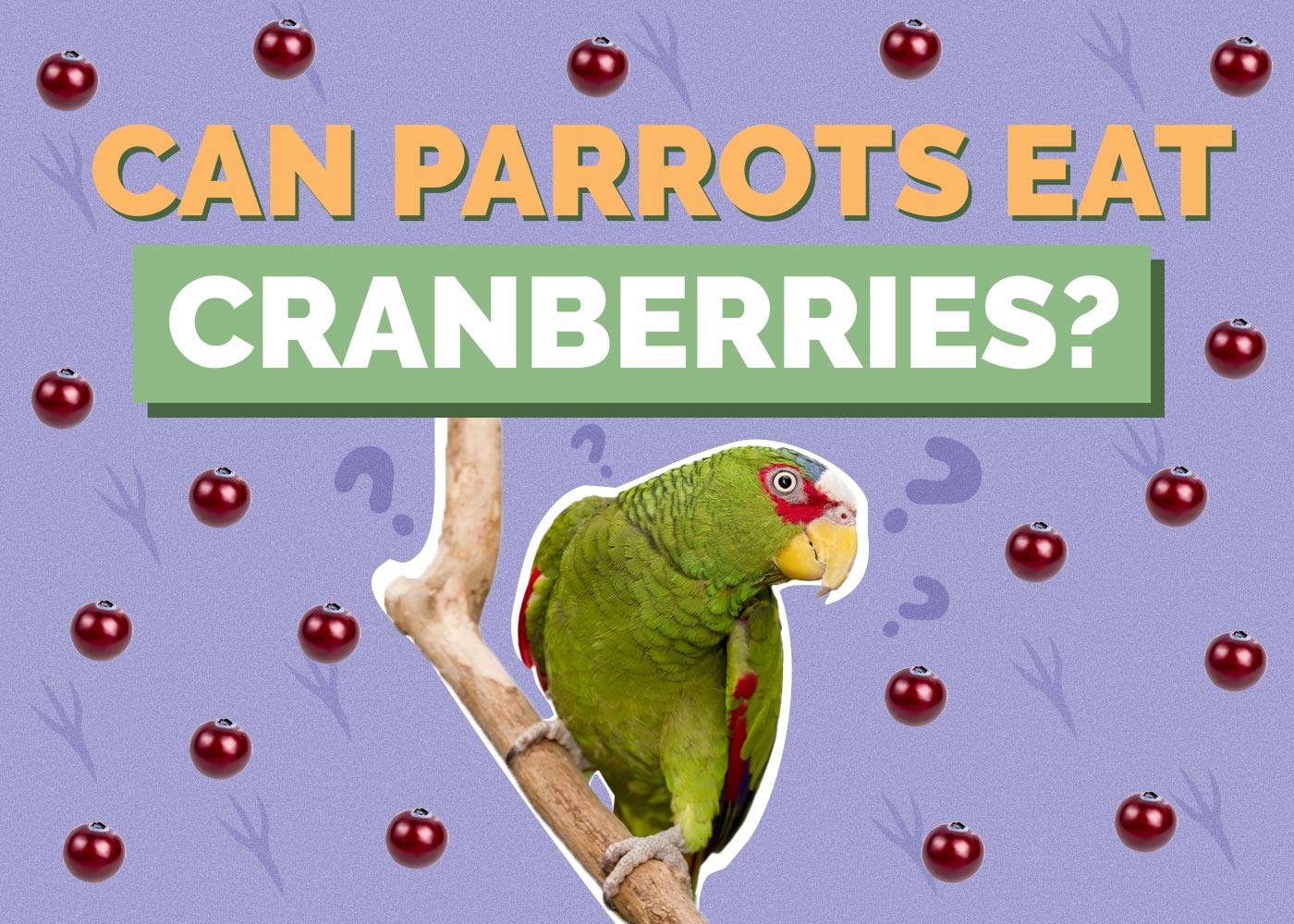How to Breed Parrots: 6 Vet-Approved Tips
Updated on

Click to Skip Ahead
If you’re considering breeding your parrots, there are some things you need to know before you begin. Breeding birds isn’t as straightforward as you might initially think, and if done improperly or without the right preparations, it could be harmful to your bird.
Read on to find our general guide on breeding parrots to determine if this is something you should be seriously considering, but keep in mind there are hundreds of species of parrots and some have their own specific requirements which will not be dealt with in this article. There may also be licensing requirements or laws related to breeding parrots in your area, so make you check with local authorities.
Before You Begin
Choose the Right Species to Breed
Smaller, hardier parrots that mature quickly are typically easier to breed than other types. They’re not as difficult to handle and won’t need quite as much care if they develop fast. Don’t let the phrase “easier to breed” fool you, though. Breeding still requires a lot of time, commitment, money, and know-how to do so successfully. Each species will have its own set of requirements so make sure that you know your species and speak to an expert.
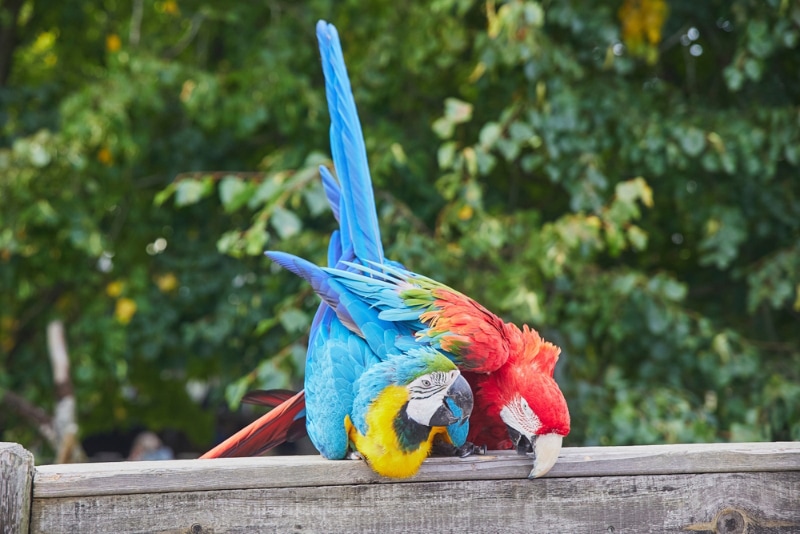
Have Your Bird Seen by an Avian Vet
Before you begin your breeding program, we recommend getting the thumbs up from your avian vet. They should perform a full avian disease screening to ensure your birds are in tip-top shape and can even provide some helpful tips to help you along. The vet will take into account the age and health of your bird to determine if they are fit for breeding.
Get the Right Equipment
Before we can delve into specifics for breeding, you’ll need to gather your supplies. At a bare minimum, you will require the following for breeding your parrots:
- Breeding cages. These are sometimes also known as divided or double bird cages. They look like two side-by-side cages with a removable middle section.
- Breeding boxes. These boxes attach to the side of your cage and provide a place for your female parrot to lay her eggs. They should be enclosed and dark to give the soon-to-be mom plenty of privacy, but with a window for you to keep tabs on what is going on.
- Incubators. An incubator can hold several eggs at a time and provide the heat they need to hatch properly. However, some mother birds will want to be involved, eliminating the need for an incubator.
- A brooder is a necessity if the parents are not raising the babies. This is where the chicks will go when they’ve hatched, providing them with the heat and humidity necessary to get strong.
- Thermometer & hygrometer. These tools allow you to maintain the proper temperature and humidity for your parrots while they’re breeding. The right weather conditions are essential to a successful breeding season.
Research Interbreeding & Hybridization
Ethical breeders do not believe in breeding two closely related birds. Choosing to breed such animals can cause genetic problems and will inevitably degrade the species’ vitality.
Hybridization occurs when two different species are bred together.
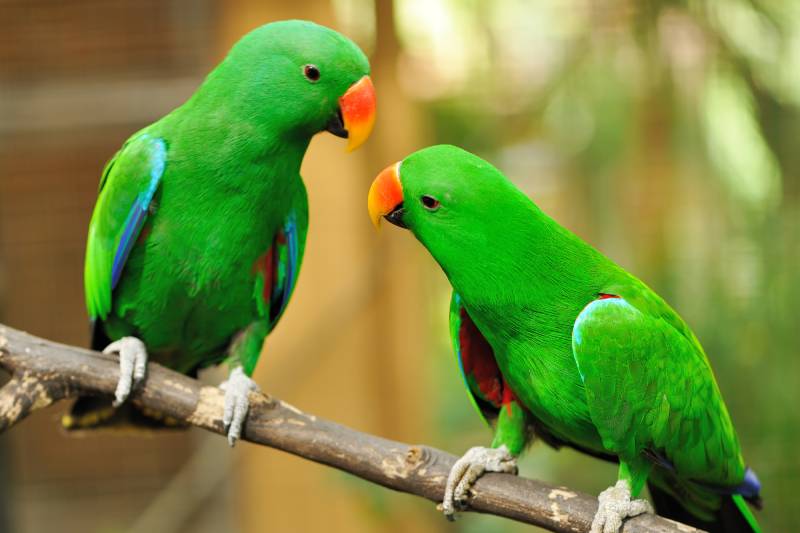
Know What Problems Can Arise
Knowing what problems can arise from breeding is an important thing to research. Many things can go wrong, so educating yourself on the dangers allows you to be prepared in case the unthinkable happens.
One of the biggest issues for breeding females is nutritional imbalances, which can result in egg binding. This occurs when your bird cannot naturally expel the eggs from her body. This is a life-threatening condition, so be sure you research it.
A prolapsed uterus can also occur in breeding females which is also an emergency needing urgent veterinary treatment.
Make Sure Your Birds Are Compatible
Just like how not all humans are compatible with each other, nor are all parrots. Before putting two parrots together, you’ll need to ensure they are well-suited for each other. It can take a year or more before birds feel comfortable around one another, so the sooner you’re able to introduce the two, the better.
It’s also important to know that most parrot species form long-term monogamous pair bonds. This means you might not have any luck breeding a pair that has previously mated with someone else. Young birds are more likely to form mating bonds than older birds.
Another aspect of compatibility is determining the sex of your birds. Male and female parrots look the same. You can also have them DNA tested or examined by an avian vet to ensure you do indeed have a male and a female.
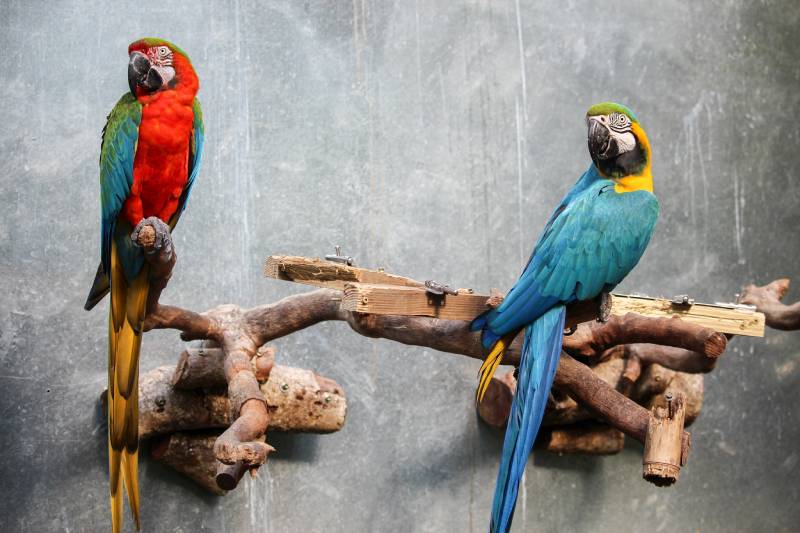
The 6 Tips on How to Breed Parrots
1. Know the Signs of Breeding Season
Most parrot species will begin breeding season sometime at the start of spring when warmer weather is beginning and rain is falling. Keep an eye open for signs your parrots are ready to start mating.
- Screaming
- Vocalising
- Preening
- Biting
- Territoriality
- Mating displays
- Regurgitation
- Nesting
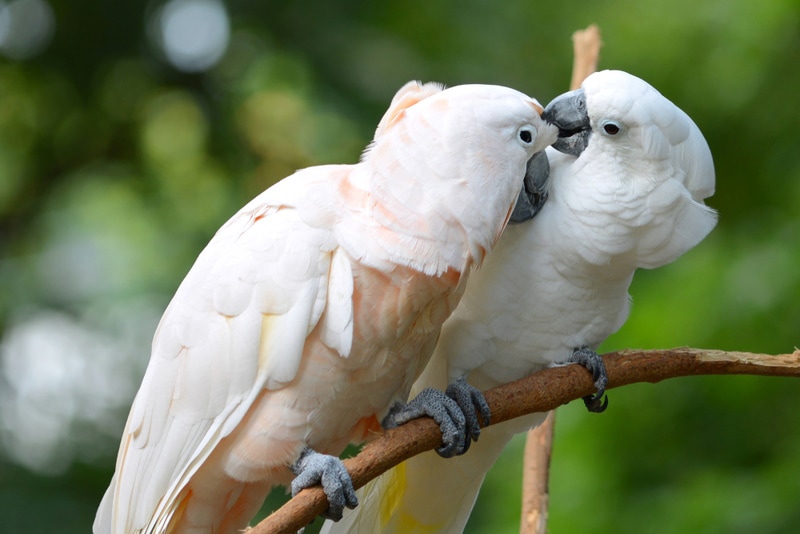
2. Put Them Together With Caution
Introducing two birds together slowly is a non-negotiable step to breeding. There are two ways you can go about this—facilitating the meeting yourself or allowing them to meet alone. Involving yourself in the process typically is the safer route as you will place the two birds next to one another in separate cages. The second method requires you to put them in the same cage right from the get-go. We generally don’t recommend the latter as parrots can sometimes be aggressive, but some people firmly believe that this is how it works in nature, so it’s natural for the parrots.
3. Give Them Privacy
Privacy is critical to ensuring a successful breeding season. Parrots can be sensitive and need to have their privacy to mate successfully. If you have other birds or pets in the home, try to give the breeding pair their own space to avoid distress and territorial aggression. Some species are more tolerant of other birds in the area than others, so again research what your species prefers.

4. Get Their Diet Right
A proper diet is essential for every bird, but it’s especially critical for breeding pairs. Females will use the nutrients from their bodies during egg laying, so the right diet is therefore critical for her to recover while she’s sitting. Once the chicks hatch, the food you’re feeding the parents will be passed onto their babies, so it’s just as important to keep up with the proper diet after they’ve hatched.
A pelleted diet is what avian veterinarians recommend for all companion birds. Those on a properly formulated pellet diet should not require additional vitamins as you may risk overloading them.
Do not allow parrots on an all-seed diet to mate. These diets do not provide the right nutrients your birds need to stay healthy and thrive. Address this improper diet well before you plan to breed your parrots to give them the best chance of a successful mating season.
5. Set the Nest Box Up Properly
There is a right and wrong way to provide a nest box for your breeding parrots. Cater your next box, hole size and nesting materials to suit the preferences of your species.
The box should be on the outside of the cage to give your birds the most interior space possible. Most people choose to offer a tall box that’s just wide enough to allow the birds to turn around while inside and deep enough that they cannot remove all the nesting materials. Height is necessary here because parrots often like to dig down a bit before they make their nest.
Some people use L-shaped boxes with the “boot” portion of the box off to the side to ensure the parrots cannot jump onto their eggs and break them. Another benefit of the L-shaped box is that it allows the parents to hide when you peek in the box.
The best material is a wood that’s the appropriate thickness for the type of parrot you’re breeding. Wood provides natural insulation and holds moisture during incubation.
Get into the habit of peeking into the nest box every day, even if they aren’t using it yet. This will give the breeding pair used to the routine. Keep their living and breeding quarters very clean and hygienic to avoid illnesses, especially in the newly hatched chicks.

6. Care for the Egg
If your parrots have successfully mated and your female has laid an egg, you may need to step in to care for it. If the parents appear to be doting on the egg in the nesting box, leave it and let them do what comes naturally to them. If not, you can move the egg into an incubator so you can care for it yourself. This will include feeding a newly hatched chick which will need feeding every few hours. Care must be taken to avoid husbandry problems like poor nutrition, swallowing foreign material and crop burns from feeding.
Final Thoughts
Breeding parrots is a challenging but rewarding venture that isn’t right for everyone. It involves a lot of planning, foresight, and preparation. We highly recommend speaking with your avian veterinarian before taking the leap, as they can provide a lot of valuable insight and tips to help you decide whether breeding is viable or safe for your parrots.
See Also:
- Can Parrots Lay Eggs Without Mating? Health Facts & FAQ
- Do Parrots Mate for Life? Vet-Reviewed Facts & FAQ
Featured Image Credit: atiger, Shutterstock



